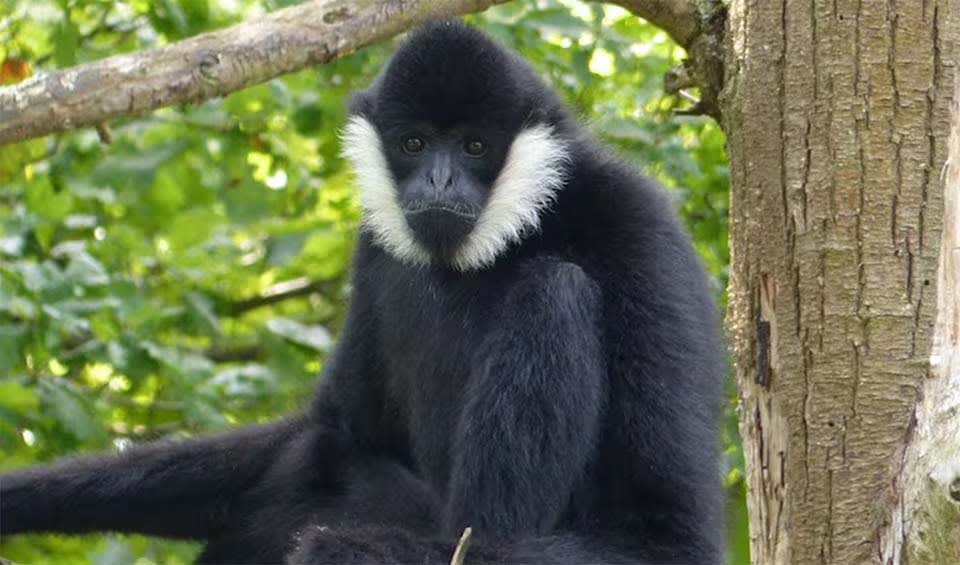A highly endangered species of ape found primarily in the dense, mountainous forests of Vietnam, Laos, and China. This species is part of the gibbon family, which is known for its remarkable agility and distinctive vocalizations. Black crested gibbons are particularly notable for their striking appearance and complex social and vocal behaviors.
Physically, black crested gibbons have long arms and no tail, features that are ideal for their primary mode of transportation: brachiation, or swinging from tree limb to tree limb. Their bodies are adapted to a life spent almost entirely in the trees, with strong, hook-like hands for gripping branches. Males and females exhibit significant differences in coloration; males are generally black with distinctive white or light-colored cheeks, while females tend to be golden or buff-colored with a black crest on their heads.
One of the most captivating aspects of black crested gibbons is their singing. These gibbons are among the most musical of all primates, using complex songs to communicate with each other, define territory, and strengthen bonds within their family groups. Each morning, family groups perform loud, elaborate song duets that can carry for miles through the dense forest. These songs are not only a key part of their social structure but are also so distinctive that scientists can identify individual gibbons and their family groups just by listening.
Black crested gibbons live in small, tight-knit family groups consisting typically of a mated pair and their offspring. This social structure is crucial for their survival, providing stability and cooperation in parenting and defense. The gibbons have a monogamous mating system, which is relatively rare among primates, and pairs often remain together for many years. Females give birth to one infant every two to three years, making the population growth rate of these gibbons quite slow, which adds to their vulnerability.
Distribution
 China
China Laos
Laos Vietnam
VietnamAnything we've missed?
Help us improve this page by suggesting edits. Glory never dies!
Suggest an editGet to know me
Terrestrial / Aquatic
Altricial / Precocial
Polygamous / Monogamous
Dimorphic (size) / Monomorphic
Active: Diurnal / Nocturnal
Social behavior: Solitary / Pack / Group
Diet: Carnivore / Frugivore / Omnivore / Piscivorous / Insectivore
Migratory: Yes / No
Domesticated: Yes / No
Dangerous: Yes / No




